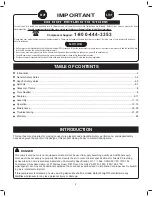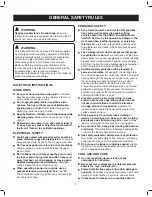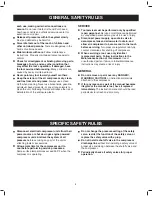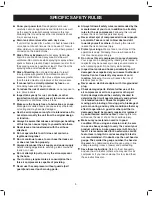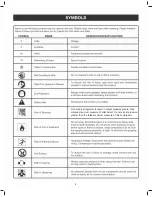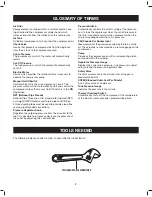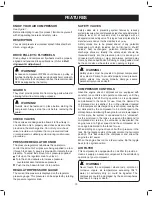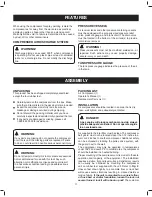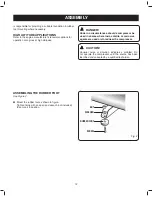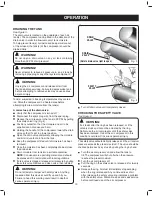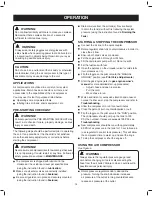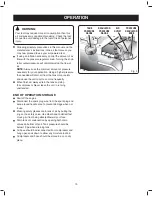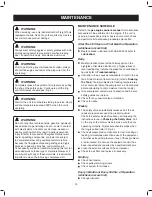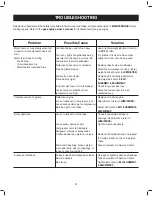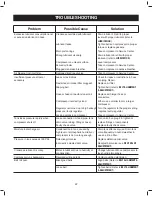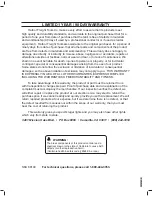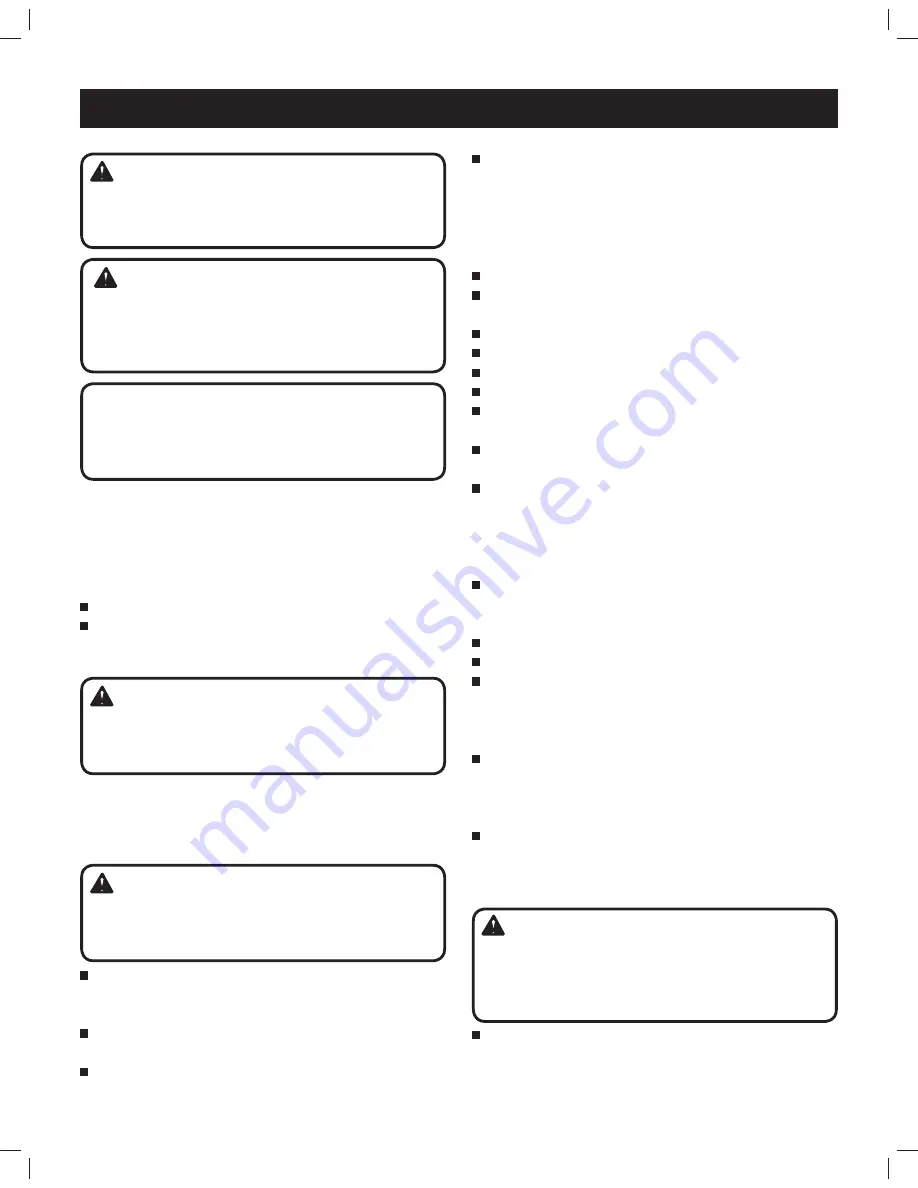
14
Drain moisture from the air tank(s). Never attempt
to drain the tank(s) without first relieving the system
pressure (using the instruction found in
Draining the
Tank
).
STARTING & STOPPING THE COMPRESSOR
Connect the air line to the quick coupler.
Rotate regulator knob fully counterclockwise in order to
close the air flow.
Ensure both drain valves are closed.
Fill the engine with oil through oil fill hole.
Fill the compressor pump with oil. Do not overfill.
Fill the fuel tank with fuel.
Open the petcock on the unloader valve for cold starts
(turn clockwise or in).
Flip the toggle on the pilot valve to the “MANUAL
UNLOAD” position (see
Pilot Valve Adjustments
).
Start the gas engine (refer to
gas engine owner’s
manual
for more detailed start-up procedures):
– Adjust choke and open fuel valve.
– Pull the cord.
– Move choke to run.
Watch and listen for excessive vibration and unusual
noises. If either exist, stop the compressor and refer to
Troubleshooting
.
Allow the compressor to run for a few minutes.
Close the petcock (turn counterclockwise or out).
Flip the toggle on the pilot valve to the “RUN” position.
The compressor should pump up the tank to 135
PSI, then unload. If pressure exceeds 135 PSI, see
Troubleshooting
.
New compressors should be run with approximately
80 PSI of air pressure in the tank for 1 hour to break-in
(use regulator to control tank pressure). This will allow
the compressor time to warm up and seat the rings.
To stop the compressor, shut the engine off.
USING THE AIR COMPRESSOR
See Figure 5.
Rotate pressure regulator knob to desired line
pressure. Turning the knob clockwise increases
air pressure at the outlet; turning counterclockwise
reduces air pressure at the outlet.
APPLICATIONS
Air compressors are utilized in a variety of air system
applications. Match hoses, connectors, air tools, and
accessories to the capabilities of the air compressor.
You may use this tool for purposes listed below:
Operating some air-powered tools.
Inflating tires, air beds, sports equipment, etc.
PRE-STARTING CHECKLIST
The following steps should be performed prior to operating
the unit. If any condition of the checklist is not satisfied,
make the necessary adjustments or corrections before
starting the compressor.
WARNING:
Always wear safety goggles or safety glasses with
side shields when operating power tools. Failure to do
so could result in objects being thrown into your eyes
resulting in possible serious injury.
WARNING:
Do not allow familiarity with tools to make you careless.
Remember that a careless fraction of a second is
sufficient to inflict serious injury.
CAUTION:
Do not use in an environment that is dusty or otherwise
contaminated. Using the air compressor in this type of
environment may cause damage to the unit.
OPERATION
WARNING:
Always ensure the regulator pressure gauge read
zero before changing air tools or disconnecting the
hose from the air outlet. Failure to do so could result in
possible serious personal injury.
The compressor is shipped with lubricant in the
crankcase. Check lubricant level per specifications
(using the instruction found in
Lubrication
).
Make sure all safety valves are correctly installed.
(using the instruction found in
Features
).
Be sure all guards are in place and securely mounted
(using the instruction found in
Features
).
WARNING!
Failure to perform the PRE-STARTING CHECKLIST may
result in mechanical failure, property damage, serious
injury or even death.
WARNING!
Never assume a compressor is safe to work on just because
it is not operating. It could restart at any time. Follow all
safety precautions outlined in
MAINTENANCE
.


